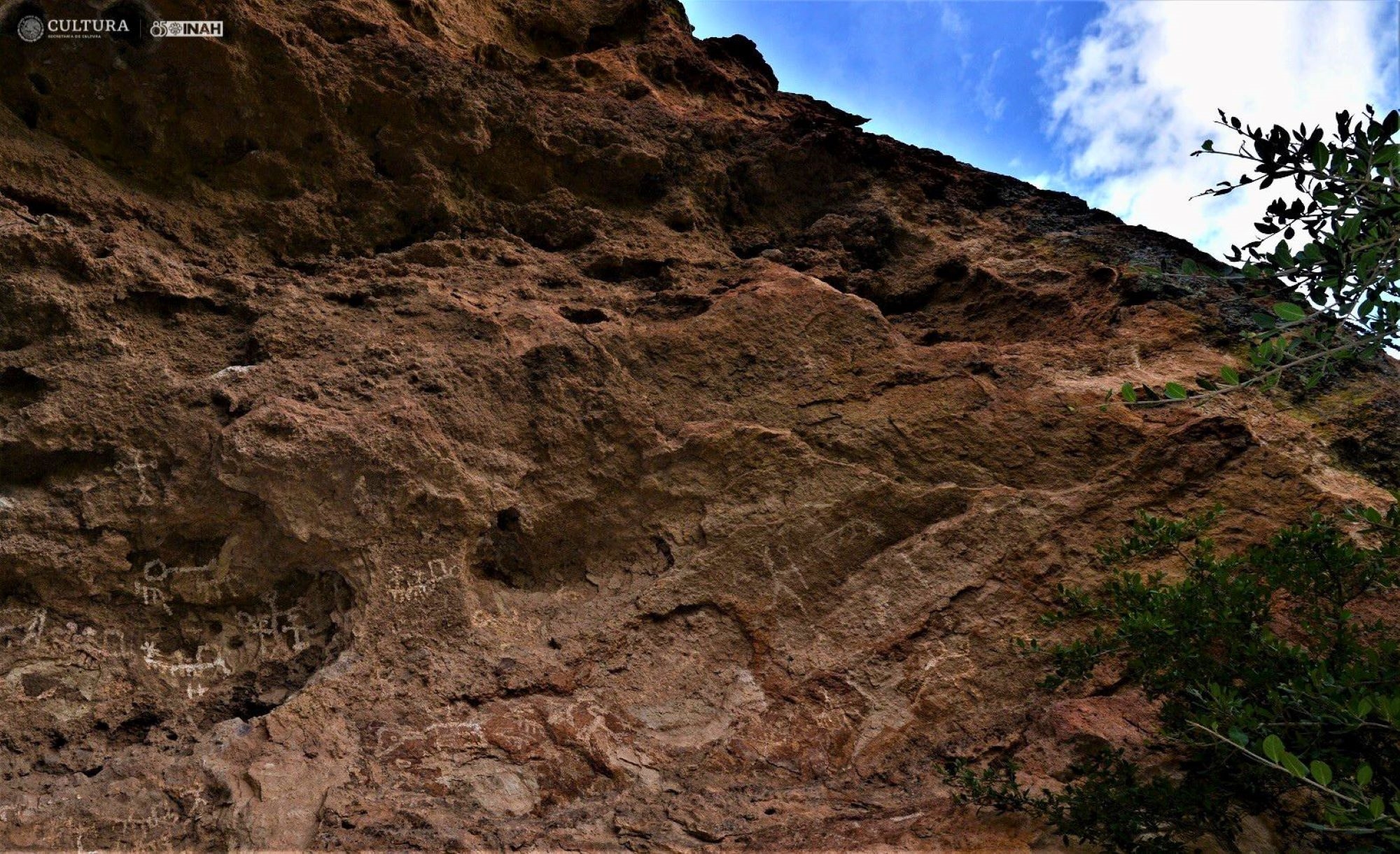Cueva de Ávalos
Route element
Cueva de Ávalos
Its location on the high part of the Sierra de Tlacotes, in the Cuisilique Valley, municipality of Ojocaliente, in the state of Zacatecas, makes Cueva de Ávalos a natural lookout point from which there is a panoramic view of the towns of Ojocaliente, El Refugio, and Palmillas, a region through which the Camino Real de Tierra Adentro extended.
At this site, various rock paintings can be admired, which are located on a kind of natural terrace surrounded by walls that form a concave space, open to the southeast and approximately 20 meters in length by 15 meters in width.
The rock paintings are attributed to the Guachichil Indians and are fairly securely dated to the colonial period. Their analysis has reinforced the idea that these images were an attempt to represent their view of the significant changes they were experiencing following the arrival of the Spaniards.
They were created with a pigment composed of clay, dug from the same wall, mixed with water and lime, depicting around ninety motifs, mostly anthropomorphic, ranging from 10 to 15 centimeters in size. There are also abstract geometric designs such as dots, multi-pointed stars, circles, square elements, and crisscrossed lines that seem to form a grid.
Galería






